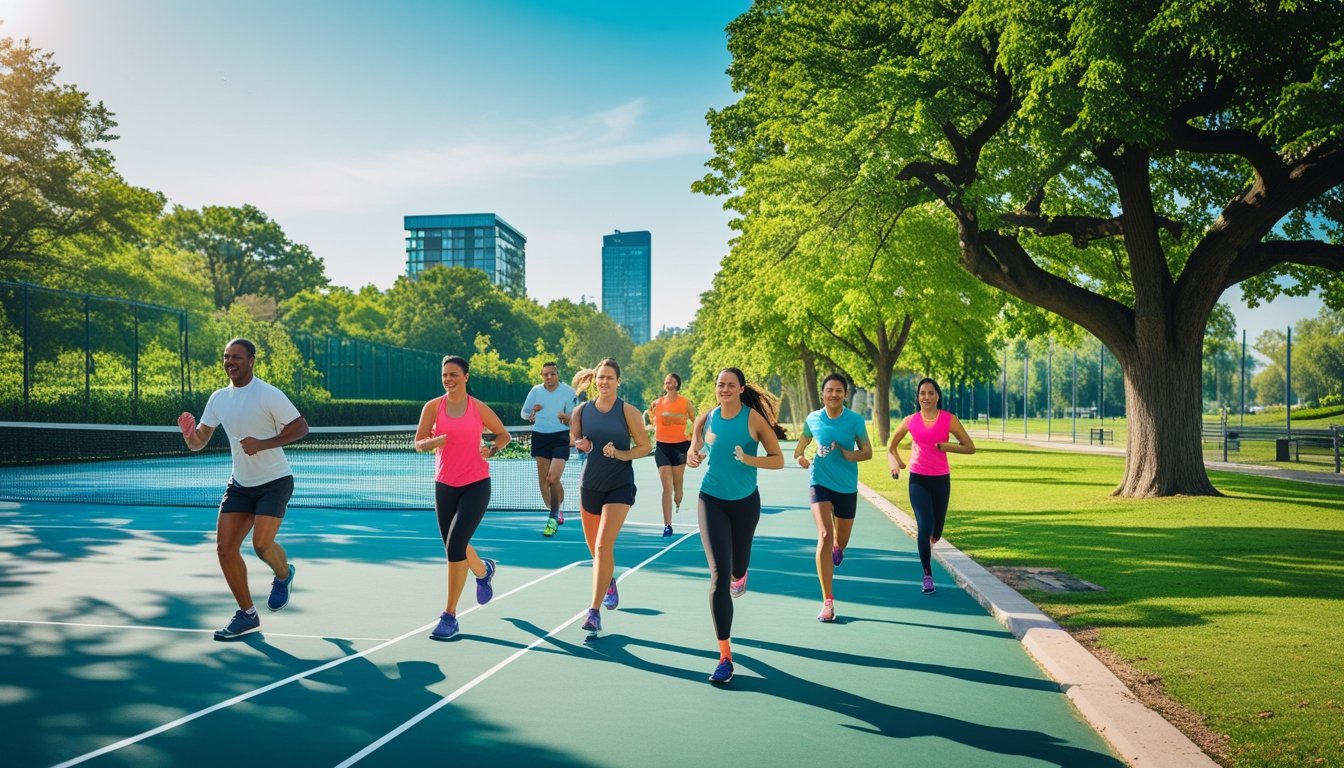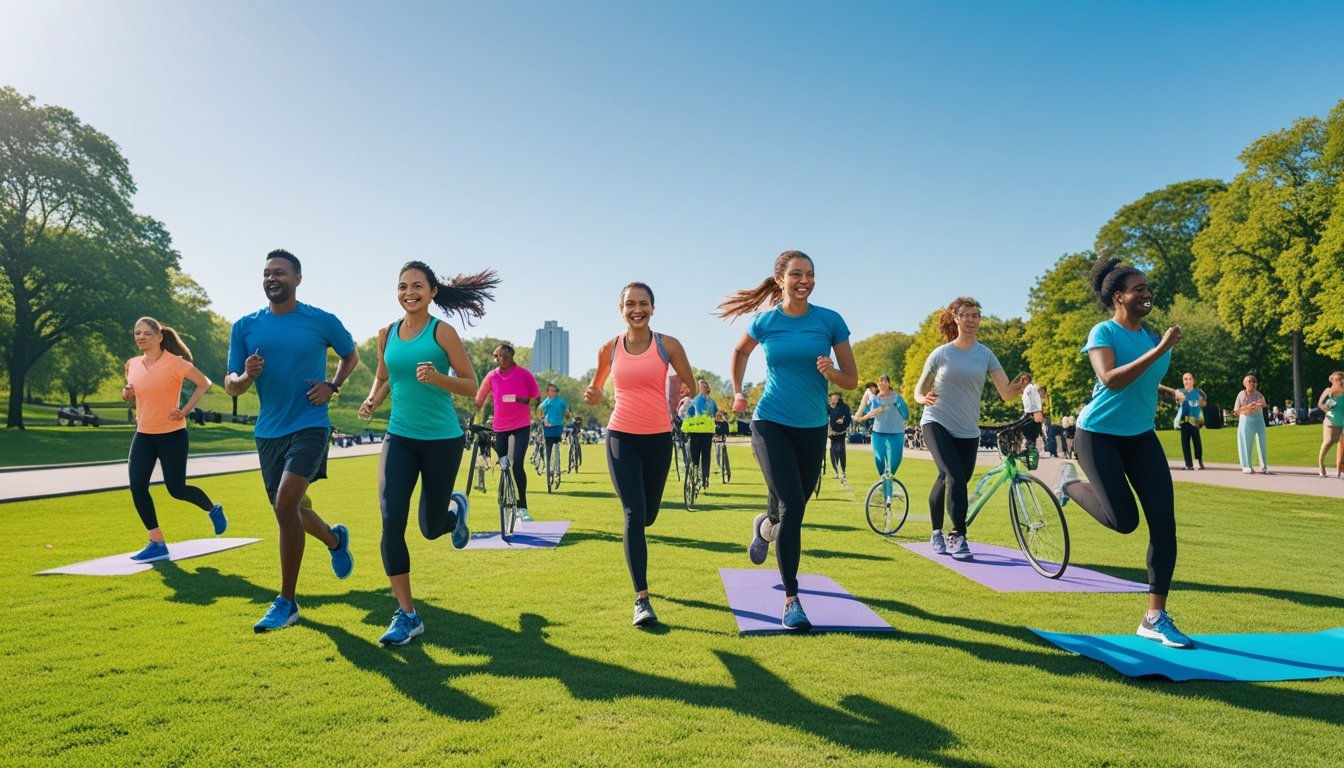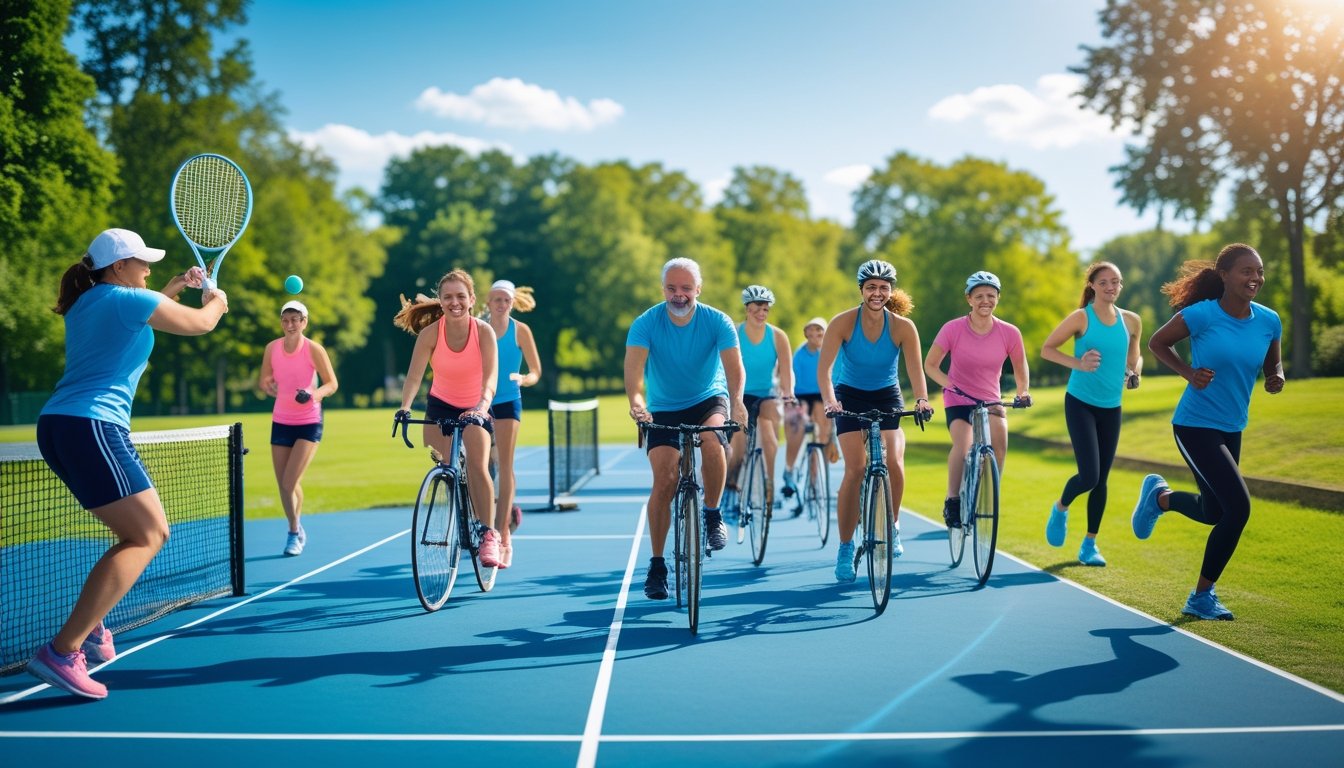Late updated: 15 Sep 2025 13:09
Written by: Emma Saunders
Exploring the Benefits of Non-Bubble Sports Activities: Enhancing Physical and Mental Wellbeing
In today's world, where traditional sports often take centre stage, non-bubble sports activities provide a refreshing alternative. These activities, not confined by mainstream boundaries, blend skill, creativity, and enjoyment, reducing pressure and promoting inclusivity. By opting for non-bubble sports, we open the door to a diverse realm that encourages individual growth, teamwork, and mental wellness without the constraints of conventional competitive structures.

The advantages of engaging in non-bubble sports extend beyond physical health. Participants can enjoy the freedom and flexibility that these activities offer, inspiring not only fitness but also a lifelong passion for movement. This approach supports a holistic lifestyle, balancing physical exertion and mental relaxation, crucial aspects necessary for maintaining well-being.
Furthermore, non-bubble sports often bring a unique cultural perspective that might include traditional games or emerging trends, broadening our understanding of global sporting traditions. By embracing these activities, we enrich our experiences and foster a sense of community, connecting people from diverse backgrounds and promoting harmony.
Key Takeaways
- Non-bubble sports offer an alternative to traditional activities.
- They promote inclusivity and reduce competitive pressure.
- Participants gain physical and mental health benefits.
Key Benefits of Non-Bubble Sports Activities

Non-bubble sports activities offer unique benefits to participants across various aspects of life. Engaging in these activities significantly improves physical health, mental well-being, and inclusivity. Avoiding the direct physical contact associated with bubble sports increases their appeal to a broader audience.
Physical Health Advantages
Engagement in non-bubble sports is an excellent way to enhance cardiovascular health. Participants often engage in continuous motion, fostering endurance and stamina while promoting weight management. Aerobic activities, such as dance or swimming, are particularly beneficial for improving heart function.
Strength training exercises like yoga or pilates enhance flexibility, core strength, and muscle tone. Non-bubble sports also minimise the risk of common injuries associated with contact sports, making them a safe option for maintaining an active lifestyle. This focus on safety attracts those who prioritise long-term health improvements without the risk of high-impact sports.
Mental Well-Being and Stress Relief
Engaging in non-bubble sports is known to boost mental well-being by reducing stress and anxiety levels. Physical activity stimulates the release of endorphins, enhancing mood and creating a sense of happiness. This natural high not only improves outlooks but also contributes to better mental health over time.
Non-bubble sports, such as yoga and tai chi, incorporate mindfulness, leading to improved focus and tranquility. The social aspects of group sports, like playing frisbee or participating in running clubs, foster a supportive environment, providing a sense of community and belonging. These activities act as a valuable tool for combating social isolation and boosting overall mental health.
Inclusivity and Safety Compared to Contact Sports
One of the standout benefits of non-bubble sports is their inclusivity. These sports often accommodate a wide range of skill levels, ages, and physical abilities, offering accessible opportunities for everyone. Unlike contact sports, non-bubble activities tend to focus on participation and fun, making them inviting to all.
They also boast a lower risk of serious injury, allowing participants to engage without the fear of collisions and impacts common in contact sports. This makes them especially appealing to those who seek a safer alternative or who might be new to physical activities. Non-bubble sports can open doors for more inclusive fitness experiences while maintaining a commitment to participant safety.
Popular Types of Non-Bubble Sports Activities

Engaging in non-bubble sports offers us the opportunity to enjoy physical activities that combine skill, strategy, and social interaction. These pursuits range from water-based adventures to various racket and club sports, as well as adrenaline-pumping team-based activities.
Water Sports and Aquatic Pursuits
Water sports provide a blend of relaxation and excitement. Swimming, kayaking, and stand-up paddleboarding offer both enjoyment and a great workout. Diving and rowing serve not only as competitive sports but also as recreational activities for many. The FINA, governing body for competitive swimming, establishes rules that guide competitive swimming, while also promoting water safety. These sports develop our cardiovascular fitness and require significant upper and lower body engagement. Water sports invite us to connect with nature and improve our agility, strength, and coordination.
Racket and Club Sports
Racket and club sports such as tennis, badminton, and golf challenge us with their own sets of physical and mental demands. Tennis and badminton require agility, quick reflexes, and strategic thinking. Meanwhile, golf, often seen as a leisurely activity, relies on precision, skill, and emotional control. The United Kingdom hosts numerous high-profile tennis events like Wimbledon. These sports offer not just physical exercise but also opportunities for social interaction and mental well-being. We enjoy the camaraderie and the skill development that these sports provide, often making them a favourite choice for a wide range of people.
Team-Based and Adventure Activities
Ultimate frisbee, volleyball, and skydiving deliver distinct thrills and challenges. Team sports cultivate camaraderie and teach us valuable skills like communication and teamwork. Activities like walking and running are less team-oriented but still community-driven when done in groups. Adventure sports such as skydiving present a unique blend of adrenaline and skill, while non-competitive activities such as walking promote endurance and cardiovascular health. Team-based sports bring a sense of unity, often leading to lifelong friendships while providing the physical and mental challenges we thrive on.
Frequently Asked Questions

In discussing non-bubble sports, we consider the diverse benefits they offer. These activities are not only instrumental in enhancing physical health but also in improving mental well-being and fostering social skills.
What are the primary advantages of participating in non-contact sports?
Non-contact sports offer a safer environment by minimising physical collisions, thus reducing the risk of injuries. Additionally, they provide an inclusive atmosphere for participants of all skill levels and ages, allowing more people to enjoy the physical and mental benefits of sports.
How do non-bubble sports activities contribute to physical health?
Engaging in non-bubble sports can enhance cardiovascular health, improve flexibility, and build muscular strength. Regular participation helps maintain a healthy weight and can increase overall stamina and endurance. These activities encourage consistent movement without the intensity of full-contact play.
In what ways do non-bubble sports promote mental well-being?
Participation in non-bubble sports activities supports mental health by reducing stress and anxiety. It can enhance mood through the release of endorphins and foster a sense of achievement. Additionally, being part of a team or group can improve self-esteem and provide a sense of belonging.
Can non-bubble sports activities improve social skills and team dynamics?
These sports encourage communication, cooperation, and teamwork. Players learn to strategise collectively, fostering mutual respect and understanding. Non-bubble sports can also build camaraderie, as participants work together towards shared goals, improving group cohesion.
What is the role of non-contact sports in injury prevention?
By focusing on skill development rather than physical dominance, non-contact sports reduce the likelihood of injury significantly. They promote safer play for athletes of all ages, allowing for participation without the fear of aggressive contact, making them suitable for broader audiences.
How do non-bubble sports activities cater to different age groups and abilities?
Non-bubble sports are adaptable, offering varied levels of play to suit different age groups and abilities. Whether it is for children learning the basics or adults seeking a low-impact workout, these activities provide inclusive opportunities. They ensure everyone can participate and benefit without the pressure of intense competition.
